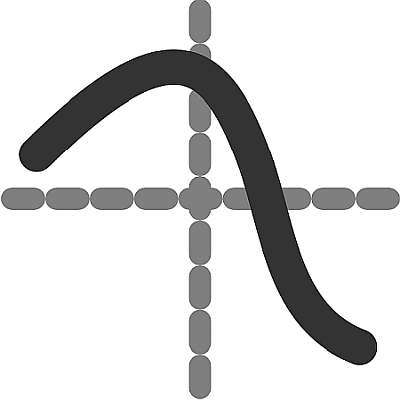Quadratic Function
Instructions: Use this calculator to reduce and graph any quadratic function you provide, with all the steps shown. Please type in the quadratic function in the form box below.
About Quadratic Functions and this calculator
This calculator will allow you to simplify and graph any quadratic function. All you need to provide a valid quadratic function in x.
It could be something that is already simplified such as f(x) = 2x^2 + 3x +1, or it could be something that is not fully simplified, such as , provided that is a valid quadratic function
Once a valid quadratic function is provided, please click on "Calculate" to see the results.
Quadratic functions are so important in Math, and there are indeed among the most commonly used functions in basic Algebra. Its properties are really intuitive from a geometrical point of view.

What is a quadratic function?
A univariate quadratic function is a function where the variable appears with a power of 2, possibly multiplied by a coefficient, plus possibly terms of lower order. The quadratic formula is:
\[f(x) = a x^2 + b x + c \]where \(a\), \(b\) and \(c\) are constants, and \(x\) is the function's variable.
Graphically, all quadratic functions are parabolas, that open upwards for a > 0, and open downwards for a < 0. The parabola described by the function \(f(x) = a x^2 + b x + c \) will be symmetric around the vertical line \(x_V = \displaystyle -\frac{b}{2a}\), which is called the axis of symmetry.
Steps for how to solve a quadratic function
- Step 1: Identify quadratic function that you want to work with, and simplify it if needed until you have it in the form \(f(x) = a x^2 + b x + c \)
- Step 2: The quadratic equation associated to the given quadratic function is \(f(x) = a x^2 + b x + c = 0\)
- Step 3: This equation has 2 roots in general. They could be real or conjugate complex roots. There is a special case with only one real root, in which case we say the roots are repeated
- Step 4: You can try to find the roots by guessing, testing for potential rational candidates
- Step 5: If the roots cannot be easily found by guessing, you can always use the general quadratic formula: \(x = \displaystyle \frac{-b \pm\sqrt{b^2 - 4ac}}{2a} \)
The types of roots you will get greatly depend on the calculation of the discriminant, which is \(\Delta = b^2 - 4ac\).
Indeed, for a positive discriminant \(\Delta = b^2 - 4ac > 0\), there will be two real roots. Graphically, this indicates that the parabola crosses the x-axis at two different points
When the discriminant is zero, \(\Delta = b^2 - 4ac = 0\), there will be one real roots. Graphically, this indicates that the parabola touches the x-axis at one point only
For a negative discriminant \(\Delta = b^2 - 4ac < 0\), there will be two complex roots. Graphically, this indicates that the parabola does not cross the x-axis
Quadratic function in Standard form
Although the general quadratic form is \(f(x) = a x^2 + b x + c \), and it is usually sufficient in order to know all we need about the quadratic function properties, there are other forms that are common.
We have the quadratic function in standard form, also known as vertex form, when it is written like
\[f(x) = a(x-h)^2 + k \]This is particularly useful because the point (h, k) corresponds to the vertex.
What are the steps for getting the standard form of a quadratic function?
- Step 1: Identify clearly the quadratic function you are provided with
- Step 2: If it is not already provided in standard form, simplify it and put it general form first \(f(x) = a x^2 + b x + c \)
- Step 3: Once you have it in general form, you just have to complete the square to reach the standard form of the quadratic function
The process of completing the squares could be laborious but it will systematically lead you to the standard form of the quadratic.
Why quadratic functions are so important?
Quadratic functions are indeed crucial, as they play a super important role in a myriad of application problems, including maximization and minimization.
The center of all algebraic calculator starts with the power of basic numbers of fractions.

Example: Quadratic Standard Form
Find the standard form for the following quadratic function: \(f(x) = 2x^2 + 2x - 1\)
Solution:
which concludes the calculation.
Example: Symmetry Axis
Find the axis of symmetry for: \(f(x) = \frac{1}{3} x^2 + \frac{5}{4}x - \frac{5}{6}\)
Solution:
which concludes the calculation.
Example: Quadratic Form and the Vertex
Find the vertex of the quadratic function \( f(x) = \left(\frac{2}{3}(x - 2)^2 + \frac{2}{5} \).
Solution:
which concludes the calculation.
More quadratic calculators
There is so much you can do with quadratic functions. You can find the roots of a quadratic equation, you can find the vertex, and find the axis of symmetry. One of the things that make quadratic functions so appealing is their highly intuitive geometric properties.
By graphing a quadratic function you can tell a lot about its roots, vertex and axis of symmetry as well.



